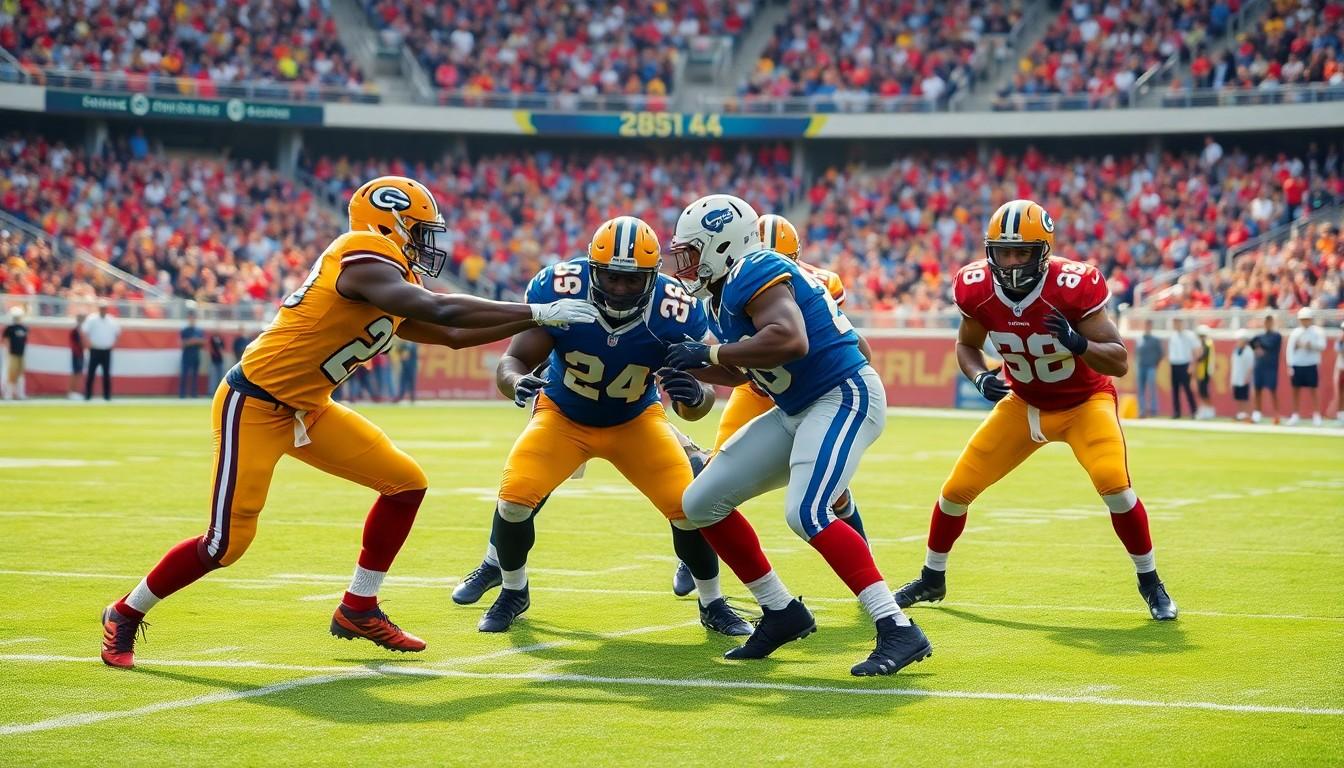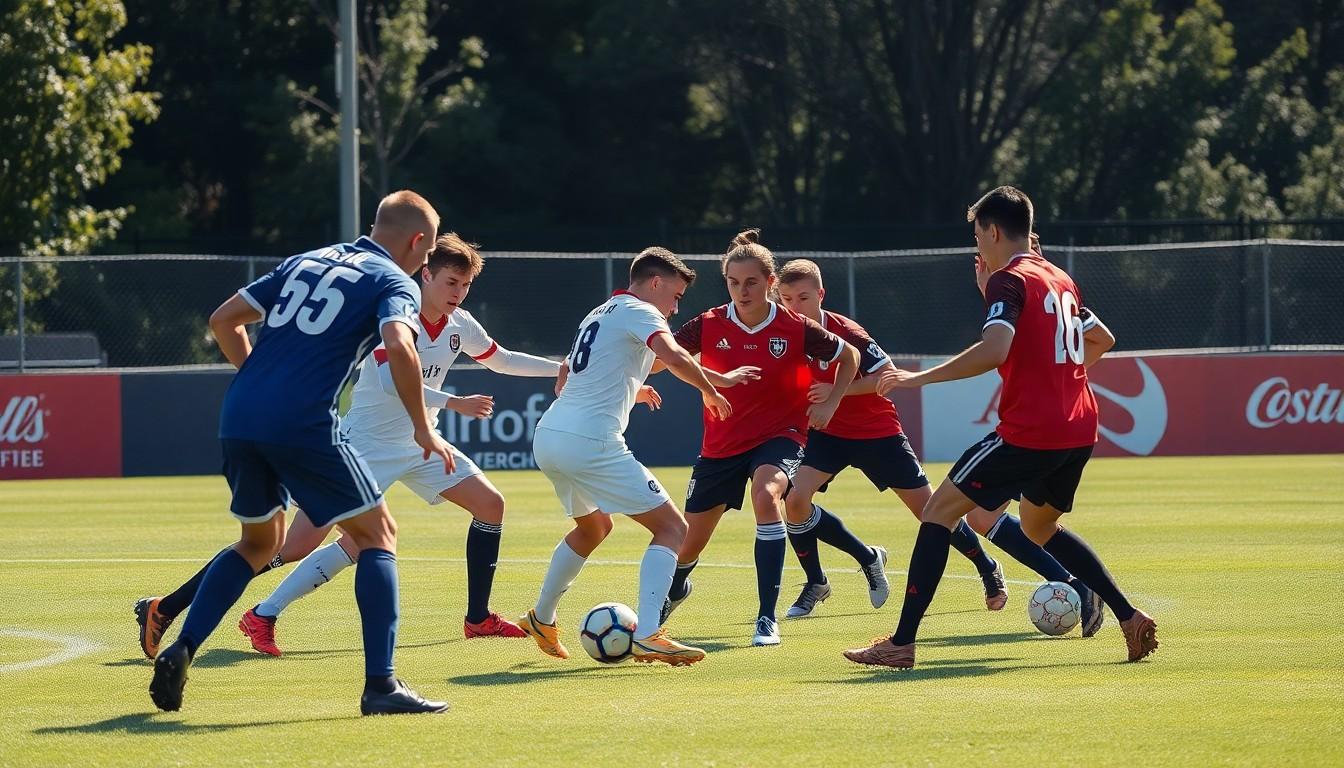Phone:
(701)814-6992
Physical address:
6296 Donnelly Plaza
Ratkeville, Bahamas.

In the world of football, where strategy and athleticism collide, match coverage is the unsung hero that keeps fans on the edge of their seats. Imagine watching your favorite team battle it out on the field, and suddenly, every player seems to have a shadow. That’s match coverage for you—players sticking to their opponents like glue, ensuring no one slips through the cracks.
But it’s not just about defense; it’s a tactical dance that can turn the tide of a game. Whether it’s the thrill of a last-minute interception or the agony of a missed tackle, understanding match coverage can elevate any fan’s appreciation for the beautiful game. So, grab your jersey and get ready to dive into the nitty-gritty of how this defensive strategy works and why it’s crucial for any successful team.
Match coverage in football refers to a defensive strategy where players closely track their assigned opponents throughout the match. This method emphasizes tight marking to minimize scoring chances for the opposing team. Players engage in a dynamic interplay, adapting their positioning based on the movement of both the ball and their assigned rivals.
During match coverage, defenders utilize various techniques to ensure they remain near their opponents. For example, they maintain physical presence and capitalize on the opponent’s mistakes. Defensive players often communicate with one another, ensuring a cohesive and coordinated effort. This synchronization prevents attackers from finding open space to exploit.
In this strategy, there are primarily man-to-man and zonal approaches. Man-to-man marking focuses on individual assignments, while zonal marking emphasizes covering a specific area of the field. Coaches may opt for a hybrid system, blending both tactics to best counter the opponent’s strengths.
Successful implementation of match coverage requires physical fitness, tactical awareness, and strong communication skills. It influences team structure and determines formations based on the strengths and weaknesses of both teams.
Understanding match coverage enhances appreciation for the complexities of football. This defensive strategy plays a key role in shaping game outcomes.

Match coverage serves as a crucial element in football, providing strategic benefits that can sway a match’s outcome. Effective use of this defensive approach empowers teams to enhance their overall game management.
Tactical advantages arise from employing match coverage, allowing teams to control the tempo of the game. Successful teams disrupt the opposition’s rhythm, limiting scoring opportunities through tight marking. When defenders stay close to their assigned opponents, they reduce the likelihood of dangerous plays. Coordinated efforts create pressure that forces opponents into mistakes. Utilizing various marking techniques enables teams to adapt to different attacking styles. By maintaining a strong presence, defenders gain positional advantages, which leads to quick transitions from defense to offense. These factors collectively contribute to a well-rounded strategic framework that enhances overall team performance.
Player responsibilities within match coverage focus on maintaining discipline and awareness on the field. Each player must clearly understand their marking assignment to prevent attackers from exploiting gaps. Effective communication among teammates is essential, as it ensures everyone is aware of threats. Marking responsibilities can shift depending on game dynamics, prompting flexibility in approach. Physical fitness plays a critical role, allowing players to keep pace with their opponents throughout the match. Tactical awareness helps players anticipate movements and react promptly. Adhering to these responsibilities enhances team cohesion, ultimately leading to better defensive results and overall success in matches.
Match coverage includes various strategies that adapt to different defensive needs. Understanding the differences between man-to-man and zone coverage provides deeper insights into how teams execute their defensive plans.
Man-to-man coverage assigns each defender a specific opponent to mark throughout the match. Each player stays close to their assigned attacker, with the goal of limiting scoring opportunities. Markers often shadow their opponents, reacting to movements and creating pressure. Effective communication between defenders is crucial in this setup. Successful teams emphasize the need for physical fitness, as marking can be taxing. This strategy suits situations where one-on-one matchups are favorable, allowing defenders to neutralize key attacking threats.
Zone coverage involves assigning defenders to specific areas of the field rather than individual players. Each defender takes responsibility for any opponent entering their designated zone. This approach allows for flexibility, as players can help each other when attackers invade their area. Teams benefit from greater teamwork, as awareness becomes crucial for effective coverage. This strategy excels at disrupting passing lanes and countering multiple attackers. Communication remains vital for maintaining structure. Zone coverage can adapt based on the flow of the match, responding to changing offensive tactics from opponents.
Effective match coverage hinges on robust strategies that enhance defensive coordination and communication. Teams can apply various techniques to maximize their defensive efforts.
Effective communication forms the backbone of a successful match coverage strategy. Players must constantly relay information about opponents’ movements and positioning. Identifying threats early allows defenders to react quickly and adjust their marking. Coaches often emphasize vocal interaction during trainings to foster seamless collaboration on the field. Collaboration not only ensures that players maintain their assignments but also helps them recognize when to switch responsibilities as situations evolve.
Making timely adjustments becomes crucial during a match, as the flow of play can change rapidly. Teams must remain adaptable, modifying their strategies based on the opponent’s tactics. Observing changes in formations or playing styles enables defenders to respond appropriately. Substitutions and tactical changes by the opposition often necessitate quick reassessments of marking assignments. Adapting the coverage strategy accordingly can help sustain defensive integrity and minimize scoring opportunities for the opponents.
Mastering match coverage is essential for any football team aiming for success. It not only strengthens defensive strategies but also enhances overall game dynamics. By closely marking opponents and maintaining effective communication players can disrupt the opposition’s flow and minimize scoring threats.
The flexibility and adaptability required in match coverage allow teams to respond to various game situations effectively. As players develop their skills in this area they contribute significantly to their team’s performance. Understanding this tactical approach deepens fans’ appreciation for the intricacies of football and the vital role defense plays in shaping match outcomes.